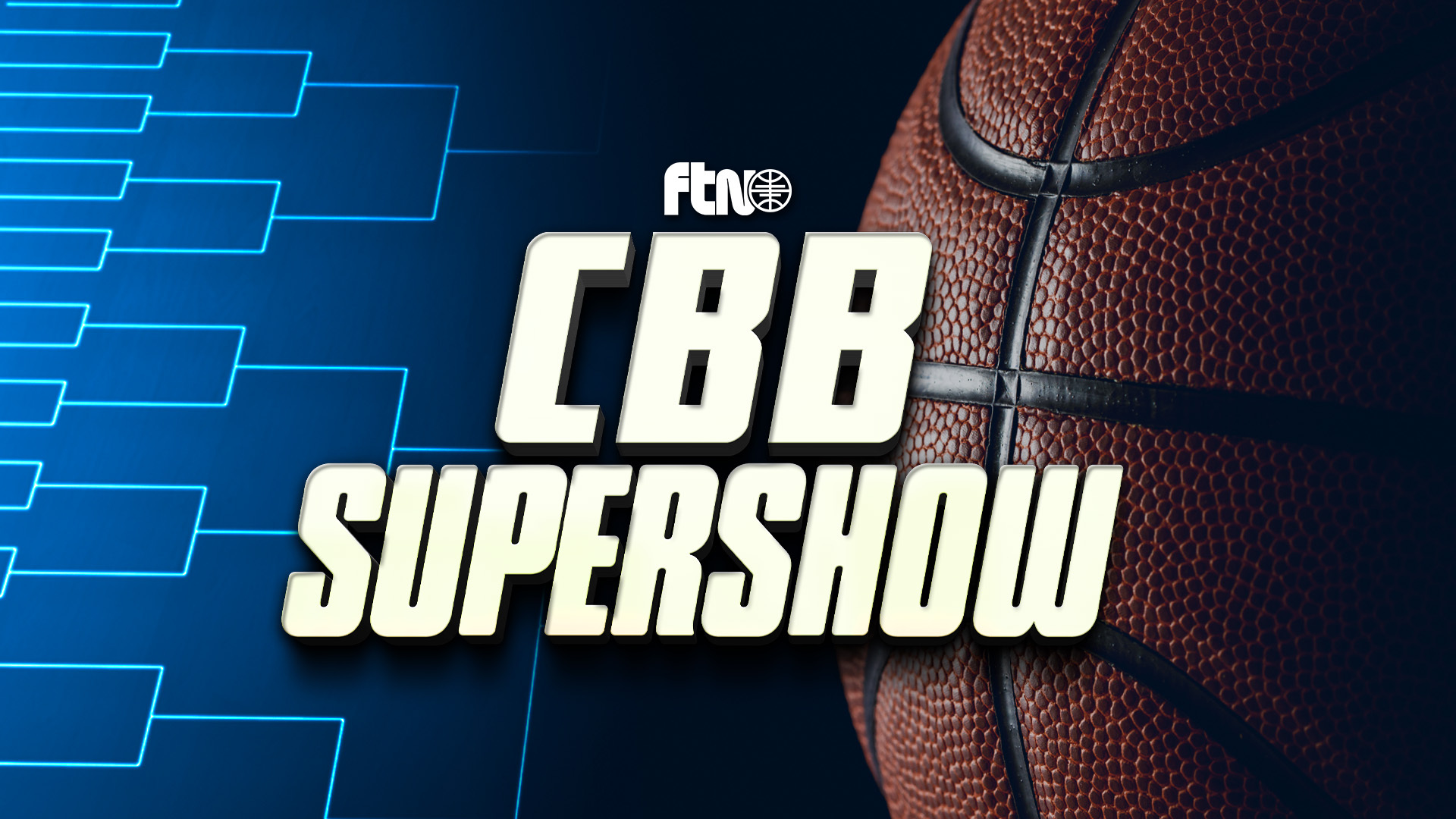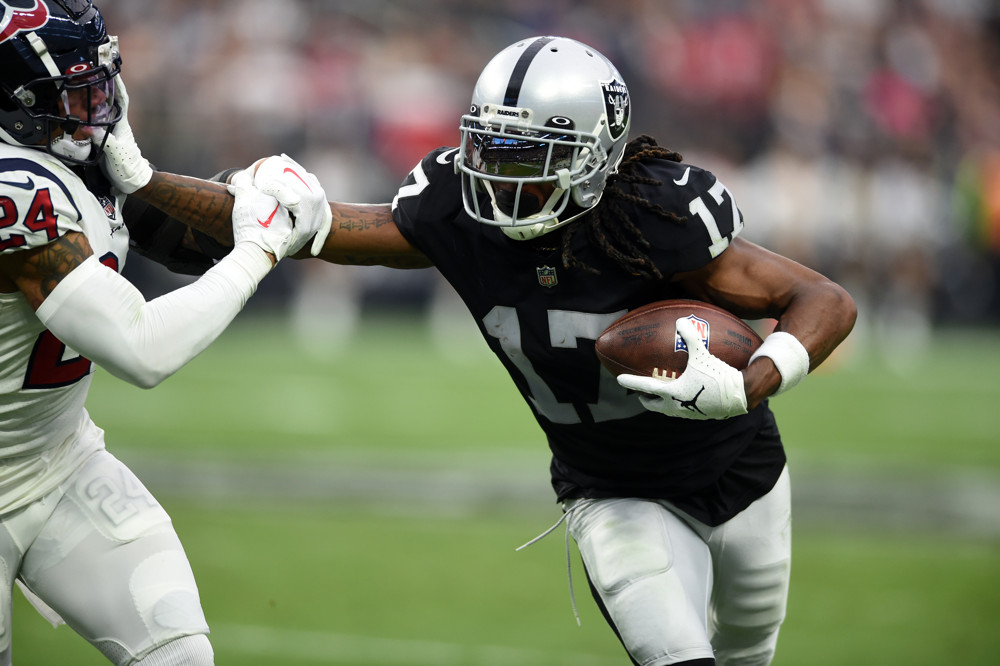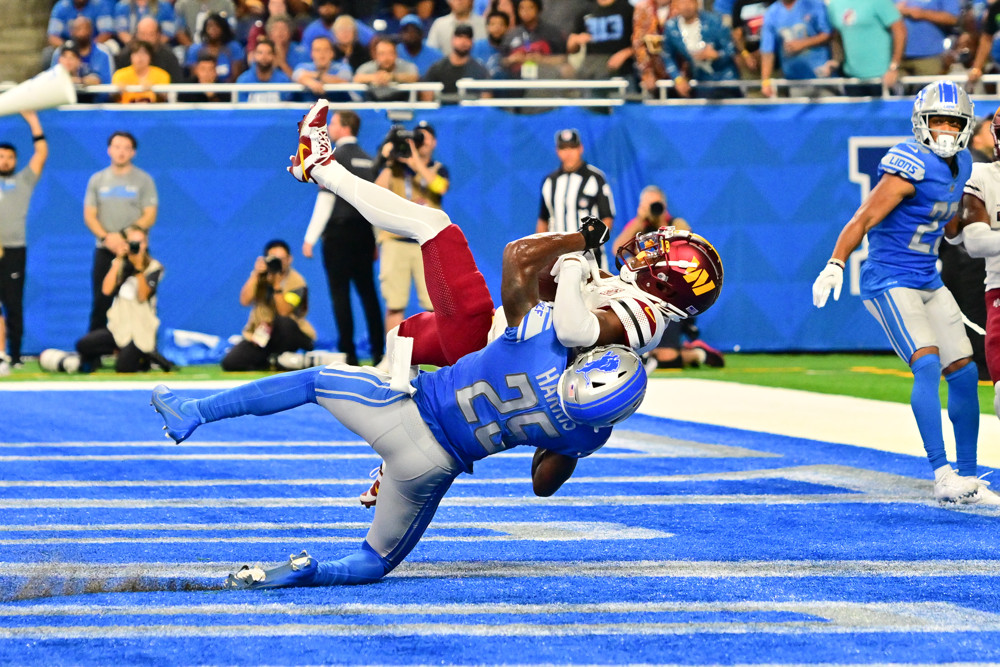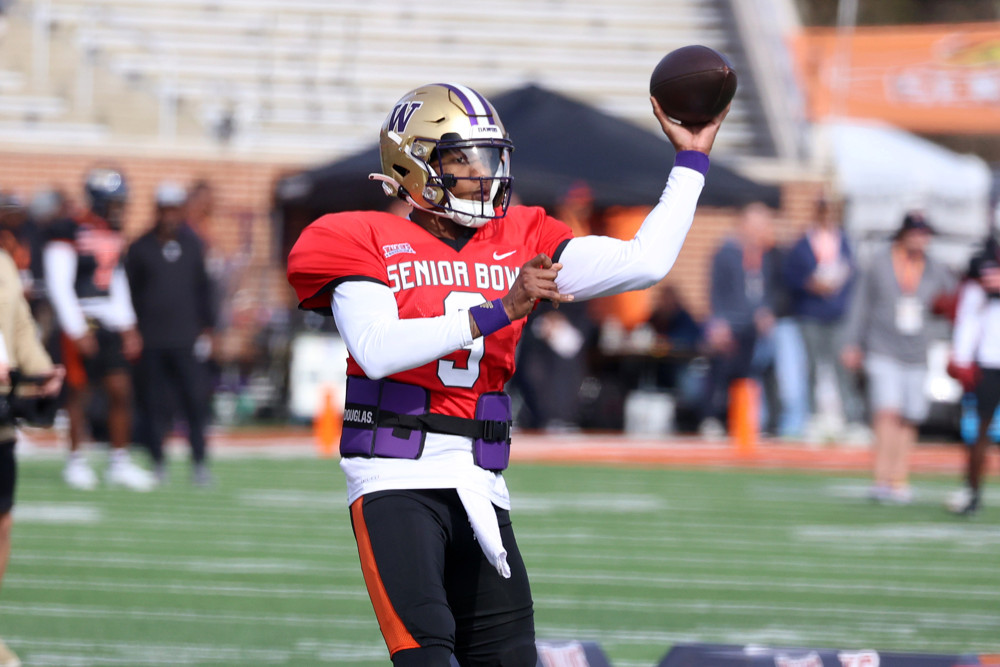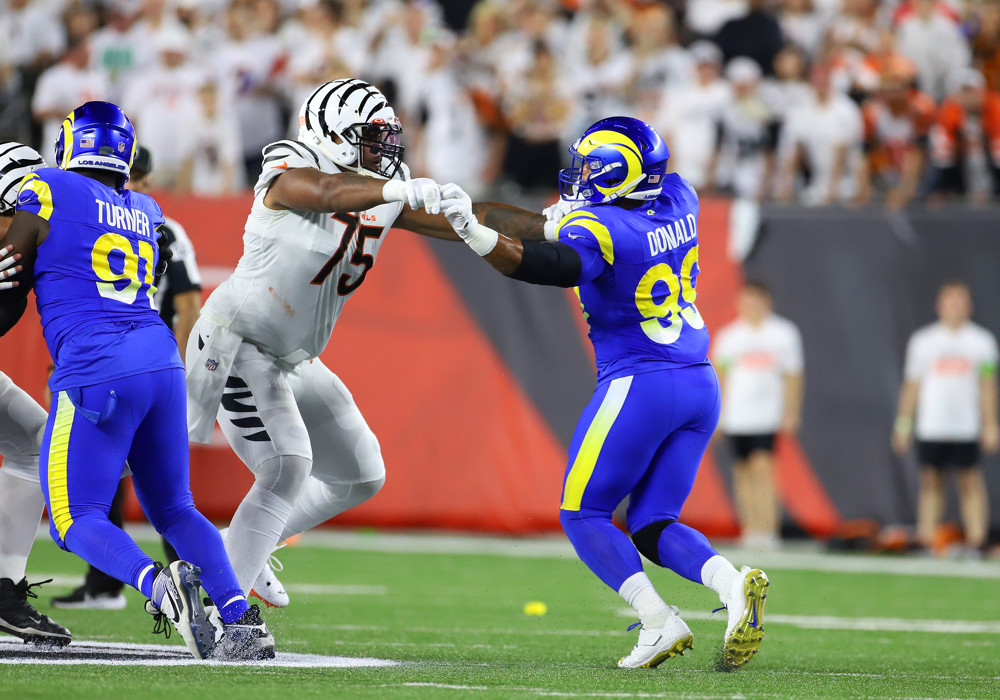
The second week of September is an awkward time for losing teams in the NFL. To some, kicking the season off 0-1 can be easily brushed off. “We’ve got a whole season ahead of us. Burn the tape. Let’s clean it up at practice on Wednesday. We’re on to Week 2.” On the other hand, the dreaded Week 1 upset can make the NFL’s best fight an uphill battle. Since 1970, fewer than 10% of teams who started 0-2 have gone on to make the playoffs. That’s trouble for a team like the Cincinnati Bengals, who got completely shut down in their Week 1 debut against the Cleveland Browns.
This was a special kind of beatdown. The vaunted Cincinnati Bengals offense finished the 2022 season fourth in offensive DVOA and was projected to be even better this year. The Bengals boast one of the league’s best receiving duos in Ja’Marr Chase and Tee Higgins, added new offensive line talent in left tackle Orlando Brown Jr., and just made Joe Burrow the first $55-million-per-year quarterback in NFL history. This should have been a homecoming for the Bengals.
Instead, it was a thrashing. Cincinnati’s offense looked like a rain-soaked shell of its 2022 self. The Bengals amassed 142 yards of total offense, their fewest since Week 7 of 2014. Burrow’s 82 passing yards on 45.2% completion rate are both career lows as a pro. Chase and Higgins both registered drops, with Higgins failing to catch a pass on eight targets. The Bengals’ offensive line got worked all afternoon, combining for 13 blown blocks (per Sports Info Solutions). Cincinnati finished 31st in pass block win rate and dead last in run block win rate, according to ESPN.
The Bengals tried everything to change the tides, all to no avail. Burrow even put a glove on his throwing hand–something he almost never wears in games–at the top of the second quarter. Given his notorious nine-inch hands, maybe a glove could help Burrow get a better grip on the rain-soaked football. It didn’t make much of a difference. Burrow went 2-for-4 for 10 yards with the glove on. He ditched it after halftime.
For an elite offense to go out and absolutely implode is rare, but not unheard of. Cincinnati became the 15th team in the DVOA era (since 1981) to finish the previous season in the top five of offensive DVOA, then open the next year with an offensive DVOA below -30%. The problem? Only one of those 14 other teams – the 2021 Green Bay Packers – was able to repeat as a top-five offense the following season. Given Sunday’s performance, how likely is it that Burrow and the Bengals can resist this historical trend?
| Great Offenses Stumble in Week 1, 1981-2023 | ||||||||
| Team | Year | W-L | Off DVOA Wk 1 |
Rk | Off DVOA Y-1 |
Rk | Off DVOA Full Season |
Rk |
| WAS | 1985 | 0-1 | -45.3% | 24 | 11.4% | 5 | 1.3% | 12 |
| LARD | 1991 | 0-1 | -44.9% | 25 | 20.4% | 2 | -1.2% | 17 |
| SF | 1999 | 0-1 | -77.2% | 30 | 29.7% | 2 | -1.7% | 16 |
| TEN | 2000 | 0-1 | -42.7% | 27 | 18.6% | 3 | 1.1% | 16 |
| PIT | 2002 | 0-1 | -48.4% | 30 | 15.3% | 4 | 7.1% | 11 |
| TEN | 2004 | 1-0 | -33.9% | 28 | 16.7% | 4 | -3.2% | 17 |
| NYJ | 2005 | 0-1 | -42.1% | 28 | 21.2% | 4 | -19.9% | 31 |
| DEN | 2006 | 0-1 | -45.5% | 30 | 27.4% | 2 | -4.8% | 19 |
| JAX | 2008 | 0-1 | -53.2% | 29 | 21.9% | 3 | 6.2% | 13 |
| PIT | 2011 | 0-1 | -72.3% | 32 | 14.5% | 5 | 11.6% | 6 |
| SD | 2014 | 0-1 | -34.4% | 28 | 23.6% | 2 | 7.0% | 10 |
| DEN | 2015 | 1-0 | -49.3% | 30 | 20.3% | 3 | -8.5% | 24 |
| GB | 2021 | 0-1 | -58.9% | 32 | 29.1% | 1 | 20.2% | 2 |
| TEN | 2021 | 0-1 | -51.2% | 31 | 18.4% | 4 | -4.2% | 20 |
| CIN | 2023 | 0-1 | -42.9% | 31 | 12.1% | 4 | — | — |
Before we get into the offenses on this list, it might help to shed some light on the defenses they faced. Of the 14 offenses on this list, nine of them faced off against teams who would go on to finish top 10 in defensive DVOA that season. That logically checks out: what better way to hype up a season than pitting one of last year’s good offenses against one of last year’s good defenses? It happens especially often in divisional matchups. The 1985 season kicked off with Dallas picking off Washington’s Joe Theismann five times. The eventual league-leading Baltimore Ravens defense started the 2011 season by racking up three interceptions and three fumble recoveries against the Pittsburgh Steelers.
Some of those matchups came by surprise, though. In 1999, Steve Young’s 49ers ran into a completely revamped Jacksonville Jaguars defense. New hire Dom Capers turned Jacksonville around, leaping from 20th to fourth in defensive DVOA year-over-year. Jacksonville made that turnaround known immediately in Week 1 by holding Young to an abysmal 9-for-26 for 96 yards and a pair of interceptions. 36-year-old Jerry Rice was held to just 1.89 yards per target, which was the second-worst performance of his career with at least five targets.
The Cleveland Browns have certainly set themselves up for success in 2023. They spent most of their offseason resources revamping the defense. Multiple personnel adds, a handful of draft picks, and new defensive coordinator Jim Schwartz all combined to make a new-look Browns defense that gave Burrow hell. According to TruMedia via The Athletic’s Nate Tice, Cleveland’s 1.95 time to pressure on Sunday was the sixth-fastest average by a defense since the stat began in 2019. Plus, rain or not, no defense has ever held Burrow to under 100 yards passing. We’re trying to prognosticate the Bengals offense, but this performance bodes well for the Browns’ future.
Another commonality between most of these teams: roster churn. It’s tough to keep together an elite group of players forever. The 1991 Los Angeles Raiders collapsed in their first season without Bo Jackson. Quarterback Jay Schroeder led the league in passing DVOA in 1990 despite throwing so infrequently (his 334 pass attempts were 21st among quarterbacks). That’s in part because of the attention Bo commanded. Without Jackson in the backfield, the passing game fell from the league’s best to 14th in DVOA year-over-year, while the run game slipped from third to 12th.
Teams most often see their turnover along the offensive line. The 2021 Packers lost center Corey Linsley to free agency, then saw left tackle David Bakhtiari go down in training camp with an ACL tear. The 2008 Jaguars lost both starting guards in the first quarter of their season opener. The 2014 Chargers saw 10-year starting center Nick Hardwick go down in their debut. The backup center, Rich Ohrnberger, sent a late fourth-quarter snap over Philip Rivers’ head to take the Chargers out of field goal range. San Diego went on to lose 18-17.
Cincinnati stands alone here. A handful of teams on our list entered the season with mostly the same offensive starters as they did the year before. The 2023 Bengals are the only team to materially improve their roster after their top-five season and still crater out Week 1. Brown Jr. had a rough 2022, leading the league in FTN’s count of pressures allowed. However, he has traditionally been a more reliable tackle than Jonah Williams, who has moved to the right side this season, or La’el Collins, who suffered a torn ACL late last season and was released from the PUP list following the Browns game. The Bengals’ biggest material loss on offense was Samaje Perine, a backup running back with a predominant role as a pass-catcher. A useful tool, sure, but not enough to spawn one of the franchise’s worst offensive performances in nearly a decade.
Instead of spurring improvement, Brown Jr. was barreled back by Myles Garrett on multiple occasions. He allowed a team-leading four blown blocks, all in pass protection. The incumbents didn’t do much better. The Bengals play in a division with Garrett, T.J. Watt, and Odafe Oweh. They have future games against Aaron Donald, Nick Bosa, Von Miller, Will Anderson Jr., and Chris Jones. Defenses used to have to resist blitzing Burrow, lest they leave themselves vulnerable to passes behind it. Cleveland was able to disrupt enough where the countering passes were totally ineffective. If Cincinnati doesn’t clean up the offensive line play, it could be a long season.
Quarterback is another category where Cincinnati stands out on our list. Most of the quarterbacks were really up there in age. 11 of the 14 teams started a quarterback at least 30 years old. It helps explain both the slow start and the rough long-term play. A lot of these quarterbacks were on their last legs, sticking around because the team could still contend.
A handful weren’t healthy enough to stick it out. Theismann (1985 WAS), Young (1999 SF), and Peyton Manning (2015 DEN) were either knocked out for the entire season or missed a meaningful chunk of it, then never played again. A handful more – Kordell Stewart (2002 PIT), Steve McNair (2004 TEN), and Jake Plummer (2006 DEN) – just didn’t have the juice. They would go on to lose the starting job in what would be their final seasons in the league.
Burrow is the furthest thing from either of those groups. At 26, the contract Burrow just signed means he’ll be the Bengals starter for the foreseeable future. He is one of four quarterbacks below 30 on this list, joining Steve McNair (the only quarterback to appear twice on this list), Chad Pennington, and Ben Roethlisberger. Burrow doesn’t share McNair’s volatility, and Pennington is on this list because the Jets offense sunk like a stone after he tore his rotator cuff. Even Roethlisberger is a tough comparison to Burrow at this stage in his career.
Situationally, Burrow actually might have the most in common with one of the elder statesmen on this list. In 2021, Rodgers was a no-show at Packers minicamp amidst a grudge match over his future in Green Bay. That spilled into the early portions of training camp. Now, Burrow wasn’t holding out for his contract extension, but he did miss significant portions of training camp with a calf injury. It’s the second year in a row he’s missed portions of camp, sitting out last year with appendicitis. Both times have resulted in Week 1 losses with slow starts and abysmal offensive line play.
In Rodgers’ case, he took the Week 1 loss as a way to shake off the rust. After that, he strung together seven straight wins en route to another MVP campaign. Burrow needed an extra week to pick up his first win last year, but the 2022 Bengals built steam into the postseason with an 8-0 close to their regulation play.
In fact, seven of these 14 teams went on to make the postseason. The offenses for the most part don’t end up near the high achieved the year prior (only two of the seven end up with top-10 offenses by the end of the season). But the end result is still a coin flip’s odds for the postseason. After a loss that was historically unexpected, that’s about as good of odds as you can ask for.
Even a team like Cincinnati proved last year that it could overcome the odds and become one of the rare 0-2 teams to earn a playoff berth. It just becomes tougher and tougher for the Bengals to play with their food. Cincinnati luckily caught a break after Kansas City and Buffalo both dropped their openers. However, neither of their losses were as lopsided and demoralizing as Cincinnati’s. With a loaded conference and an extremely tough AFC North, the Bengals’ road to the playoffs is an uphill battle. Most of Cincinnati’s losses this offseason came on the defensive side of the ball. That offense has to carry the weight, and they’ll have to overcome pretty historic odds to do so.






















